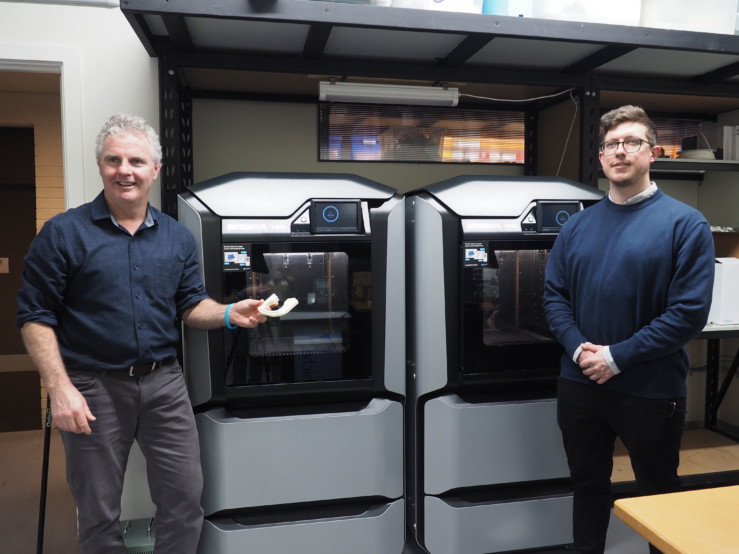With assistance through the Victorian Technology and Innovation Program (TAIP), have significantly upgraded our 3D ideation and manufacturing processes.
The TAIP Program aims to support businesses in integrating or developing innovative technologies and projects by co-contributing funding. For Cobalt, we put this towards new 3D printers and VR headsets – more specifically, the Valve index VR Kits, and two Stratasys F170 and F270 printers which use FDM (fusion deposition modelling) technology.
We chose these technologies after careful research and analysis. Cobalt already had existing 3D printers and have been trialling the integration of Gravity Sketch in our projects over course of 2020-21. Compared to our previous capability, the new printers provide improvements in almost all areas, particularly in speed, part quality and consistency, along with reduced maintenance costs. Meanwhile, the three new Valve Index VR kits provide the means to expand our capabilities and solidify VR and 3D visualisations in our design development phases.
At Cobalt we always strive to innovate with each of our designs and with the new VR headsets, we are truly embracing the future.
Sketching and ideation are fundamental parts of the design process, and 3D visualisation tools such as Gravity Sketch, help speed up this stage. 3D sketches can completely negate the use of traditional 2D drawings or can be a more detailed reference for engineers when it’s being made in CAD. Particularly for products that have detailed inner views or difficult angles, 3D sketches can be extremely valuable. Cobalt has already experimented with Gravity sketch in a few time-sensitive projects and found that design stages were 50-60% faster from initial sketches to 3D resolved forms. That naturally led to a smoother and faster transition to engineering CAD teams from the designers.
The Valve Index offers some of the best VR capabilities in the market, which would provide large performance improvements compared to our current headset. This is in addition to the added comfort and intuitive ergonomics which make a big difference over an eight-hour workday.
Cobalt has long offered prototype manufacturing services, whether in-house, or outsourced.
The making of prototypes is crucial to many aspects of product development. More specifically, it helps with testing and troubleshooting, as well as being a valuable medium for the clear communication of ideas between designer, client and third-party production suppliers. Prototypes are a visible, tangible way for all stakeholders fully experience the design, as opposed to complicated diagrams, or sketches with limited views.
Our current printer setup’s biggest limitations surrounded the operation of the machines, and the size and quality of the prints. Due to the complex nature of setting up a print, as well as removing it, there were only four staff that were authorised to operate the printers leading to bottlenecks. Maintenance and repairs alone worked out to cost us about $15 per print over a year. The quality of the prints, while adequate, usually required time consuming manual processing.
These new headsets and printers give Cobalt the ability to do more, further integrate our development process, from imagination to tangible prototypes, up to a whole new level.














